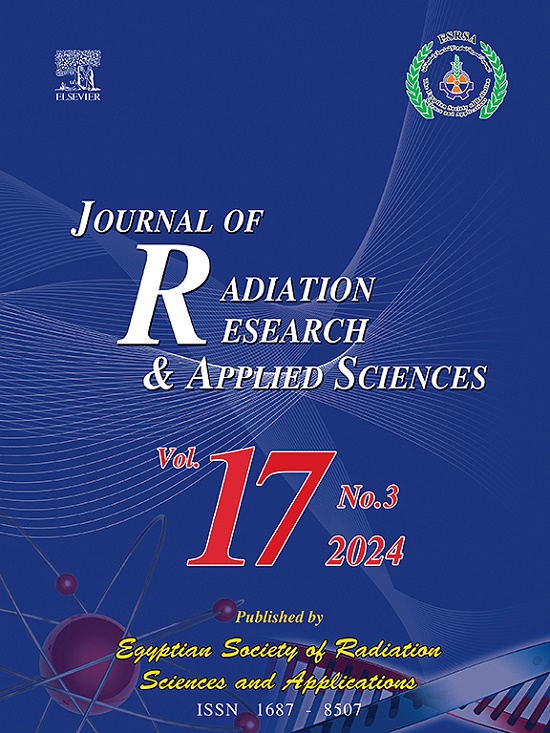A 3D residual network-based approach for accurate lung nodule segmentation in CT images
IF 1.7
4区 综合性期刊
Q2 MULTIDISCIPLINARY SCIENCES
Journal of Radiation Research and Applied Sciences
Pub Date : 2025-03-09
DOI:10.1016/j.jrras.2025.101407
引用次数: 0
Abstract
Finding cancerous tumors before they spread is very beneficial and might potentially save patients' lives. The availability of reliable and automated lung cancer detection devices is crucial for both cancer diagnosis and radiation treatment planning. Because of the abundance of data, the tumor's size fluctuation, and its location, a CT scan of a lung tumor will show poor contrast. Using deep learning for medical image processing to segment CT images for cancer detection is no easy feat. The malignant lung region shall be effectively separated from the healthy chest area by using an optimization approach with the 3D residual network ResNet50. A dense-feature extraction module takes all of the encoded feature maps and uses them to extract multiscale features. A U-Net model decoder solves the vanishing gradient problem, and a residual network encodes the input lung CT slices into feature maps. Several encoders work in tandem with the suggested design. No matter how severe a lung anomaly is, we have trained a model to extract dense characteristics from it. Even under difficult conditions, the experimental results show that the proposed technique swiftly and correctly produces explicit lung areas without post-processing. The improved segmentation result may also aid in reducing the risk, according to the available data. Evaluation results on the LUNA16 public dataset showed that the provided technique successfully segmented images of lung nodules using accuracy, recall rate, dice coefficient index, and Hausdroff.
基于三维残差网络的CT图像肺结节精确分割方法
在癌细胞扩散之前发现它们是非常有益的,可能会挽救病人的生命。可靠和自动化的肺癌检测设备的可用性对于癌症诊断和放射治疗计划至关重要。由于数据的丰富性、肿瘤大小的波动性和位置,肺部肿瘤的CT扫描对比度较差。在医学图像处理中使用深度学习来分割CT图像以进行癌症检测并非易事。利用三维残差网络ResNet50优化方法,将肺恶性区域与健康胸部区域有效分离。密集特征提取模块获取所有编码的特征映射,并使用它们提取多尺度特征。U-Net模型解码器解决梯度消失问题,残差网络将输入的肺CT切片编码成特征图。几个编码器与建议的设计串联工作。无论肺部异常有多严重,我们都训练了一个模型来从中提取密度特征。实验结果表明,即使在困难的条件下,该方法也能快速准确地生成清晰的肺区域,而无需后处理。根据现有数据,改进的分割结果也有助于降低风险。在LUNA16公共数据集上的评估结果表明,所提供的技术在准确率、召回率、dice系数指数和Hausdroff指标上均能成功分割肺结节图像。
本文章由计算机程序翻译,如有差异,请以英文原文为准。
求助全文
约1分钟内获得全文
求助全文
来源期刊

Journal of Radiation Research and Applied Sciences
MULTIDISCIPLINARY SCIENCES-
自引率
5.90%
发文量
130
审稿时长
16 weeks
期刊介绍:
Journal of Radiation Research and Applied Sciences provides a high quality medium for the publication of substantial, original and scientific and technological papers on the development and applications of nuclear, radiation and isotopes in biology, medicine, drugs, biochemistry, microbiology, agriculture, entomology, food technology, chemistry, physics, solid states, engineering, environmental and applied sciences.
 求助内容:
求助内容: 应助结果提醒方式:
应助结果提醒方式:


